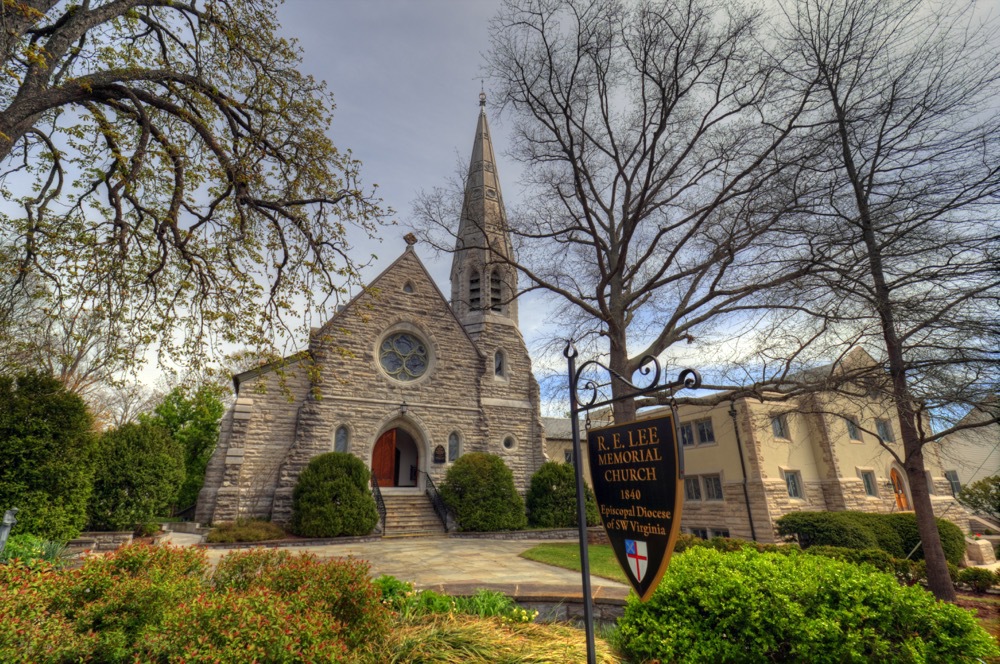When R.E. Lee Memorial Episcopal Church in Lexington, Virginia, embarked on a long and difficult exploration of what it might mean to change its name, two alumni of the Center for Justice and Peacebuilding at Eastern Mennonite University walked alongside them.
Barbara Robbins MA ’11 and The Reverend James Isaacs MA ’10 are members of Cooperative by Design, a consortium of peacebuilding practitioners working mainly in the field of congregational change. Of its 10 members, seven have ties to Eastern Mennonite University, including professors David Brubaker and Roxy Allen Kioko MA ’07. [Read more about Cooperative By Design in this EMU news coverage.]
The church’s discernment process began after the June 2015 mass shooting in an African Methodist Episcopal (AME) church in Charleston, S.C., by a neo-Confederate. Shortly afterward, other Virginia churches with historical links to the Confederacy and Confederate generals began to reconsider internal and external symbolisms.
The process with the Lexington church began in January 2016 and concluded in September 2017 with a vote in favor of the name change to Grace Episcopal Church.
In a Jan. 15 essay titled “Our church was named for Robert E. Lee — here is how we changed it,” vestry member Doug Cumming, a professor of journalism at Washington and Lee University, shares the story of the six-member committee, their hard work of discernment, and the role played by Cooperative By Design facilitators.
In the face of a fractured church that one vestry member compared to our national political discourse, the rector sought outside help that turned out to be based on radical peace-building techniques from the pacifist Mennonite branch of Christianity…
… Father [Tom] Crittenden researched the group and, with the vestry’s approval, invited two of its consultants (one an Episcopal priest) to the vestry retreat in January 2016. Two things were memorable about their visit to that retreat: A technique of giving an individual the power to speak while others listened and secondly, the idea that conflict was not something to be ‘resolved’ but was a kind of energy that could be used for ‘transformation.’
Finding the middle way of compromise led to restoration of the church’s historic name, but also to the founding of a subcommittee with the goal of seeking ways “to honor Lee and the history of this parish in meaningful and significant ways.”
To read the full article, click here.
Webinar on reconciliation efforts at Richmond church
The Zehr Institute for Restorative Justice hosted a Dec. 2017 webinar about historic reconciliation and faith-based practice, using as a case study St. Paul’s Episcopal Church in Richmond, Virginia and their four-year effort to reconcile the congregation’s historic ties as home parish church to leaders of the Confederate Army (the church has been called the Cathedral of the Confederacy). The webinar was among a series sponsored by the Virginia Foundation for the Humanities.
Click here to view the archived webinar.
Background reading
The Washington Post covered the debate among congregants in an Aug. 22, 2017, article.
The Richmond-Times Dispatch covered the Sept. 19, 2017, vote and name change.
EMU hosted The Rev. Sharon Washington Risher, who lost several family members in the Charleston shooting, during the university’s Martin Luther King Week. Read more.
